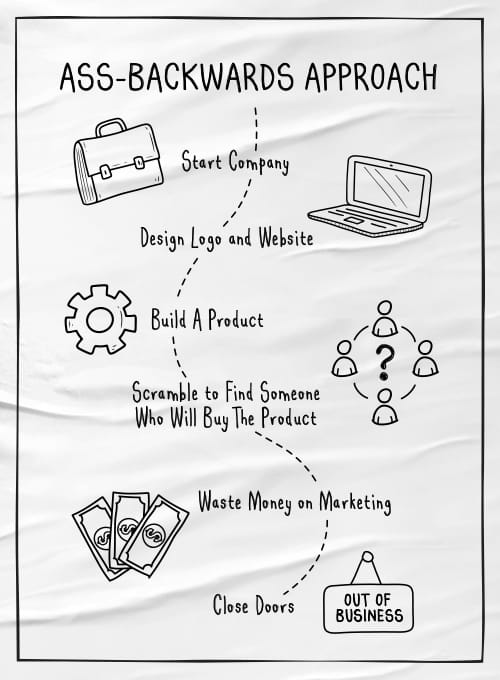
“People don’t buy your why, they buy what you can do for them.”
I’ve never bought a product because a company told me their why. Have you? I don’t care about the company’s why. I care about my why.
Understanding that people buy things to solve problems is at the heart of owning a business you enjoy. You know, one that makes money and funds your life without making you cringe on Sunday nights. Unless you have an overwhelming “why” driving you to do something, I want you to put that to the side for the moment so you can focus on identifying a problem you enjoy solving repeatedly. I want you to build a problem brand.
Problem Branding
Your brand is your reputation. Branding is everything you do to intentionally shape that reputation. Problem Branding is when you intentionally shape that reputation around solving a specific problem.
There’s nothing more valuable than being known as an expert for solving a big nasty problem. Why do you think brain surgeons make so much money? It certainly isn’t their why that adds commas to their net worth. These doctors solve scary problems and that makes them valuable.
Be the brain surgeon of Shopify websites, small business bookkeeping, or running shoes for overpronators. Make your brand synonymous with a solution to a specific problem and you’ll never struggle for revenue. It sounds like a simple concept, and it is, but most companies royally screw it up.
Let’s compare two different approaches to starting a company to show how problem branding differs from the traditional (ass-backwards) approach to starting a company.
Ass-Backwards Approach
This standard path is why the failure rate for businesses is so high. An entrepreneur starts a company, designs his logo and website, and launches a product without knowing if anyone needs what he’s built. Struggling to make money, he hires a marketing team to go out and magically find an audience who will buy this worthless product. Spoiler alert, this rarely ends well.
Contrast this with the problem branding path.
Problem Branding Approach
Problem brands start by identifying a problem and audience before they build a product. These companies can move forward confidently knowing their product solves a problem for a specific group of people. It makes clarifying your brand message, naming your company, building a compelling website, and launching successful marketing significantly easier.
Start With The Problem
Not sure about you, but I want an asset that I can sell or pass on to my children. I like the idea of a legacy that generates wealth and lives on beyond me. Building a legacy starts with solving a problem for someone willing to pay for the solution. It’s far easier than you think to take this path. All you have to do is answer these questions:
- What problem do we solve?
- Who has this problem?
- What other companies are solving this problem?
- What makes us a better choice than these other options?
Now put the problem you solve front and center on every communication channel. The better you get at solving the problem and communicating that you do it, the more business you’ll have walking in your door.
If you can’t name a problem you solve, take a step back and assess your business. Don’t worry about searching for a why or your purpose in life. Spend disproportionate time finding a big problem you can fix for someone. Everything else will fall into place once you’ve built a product that scratches someone’s itch.
Enjoy tips like this that help you grow your company? Grab The Recipe and I’ll send you my best branding and marketing tips every Friday.


